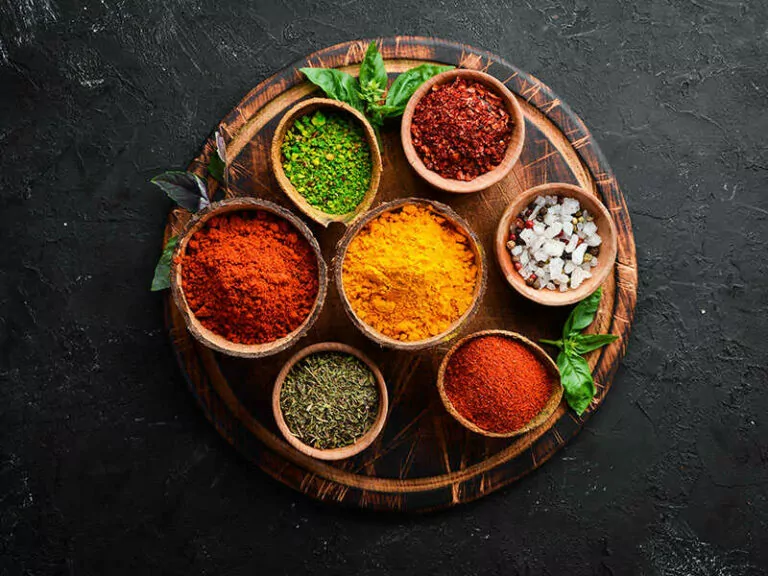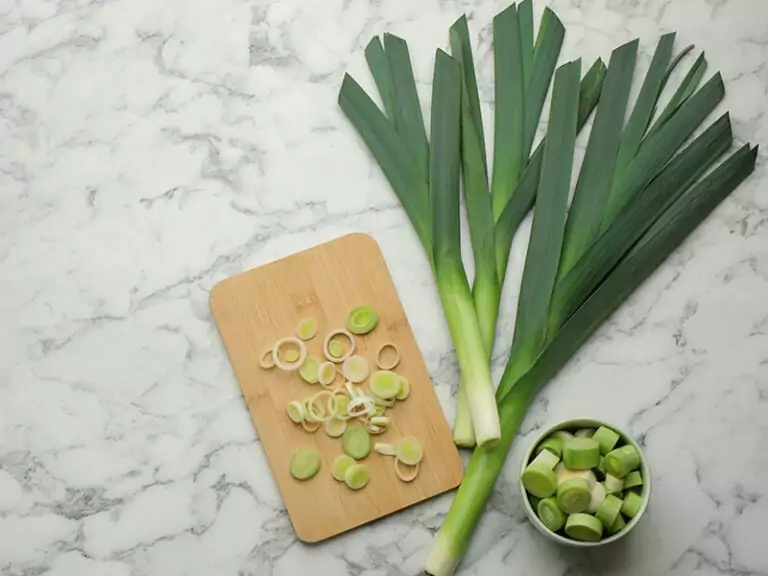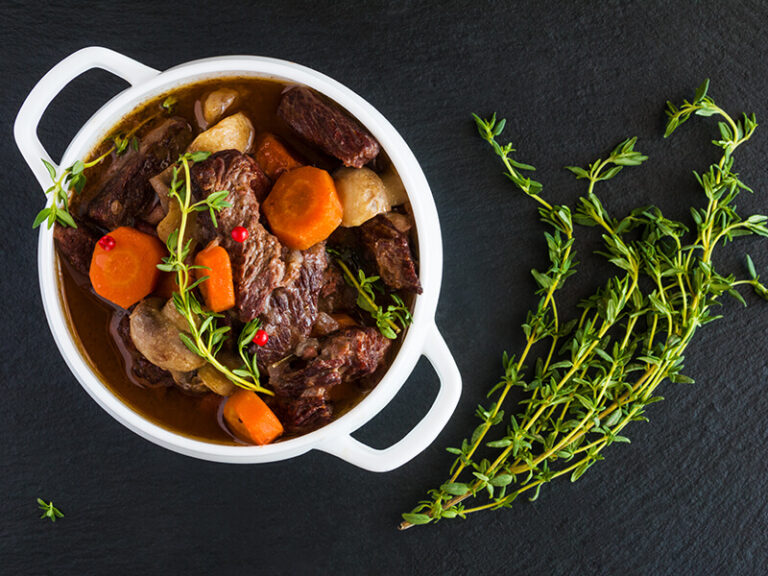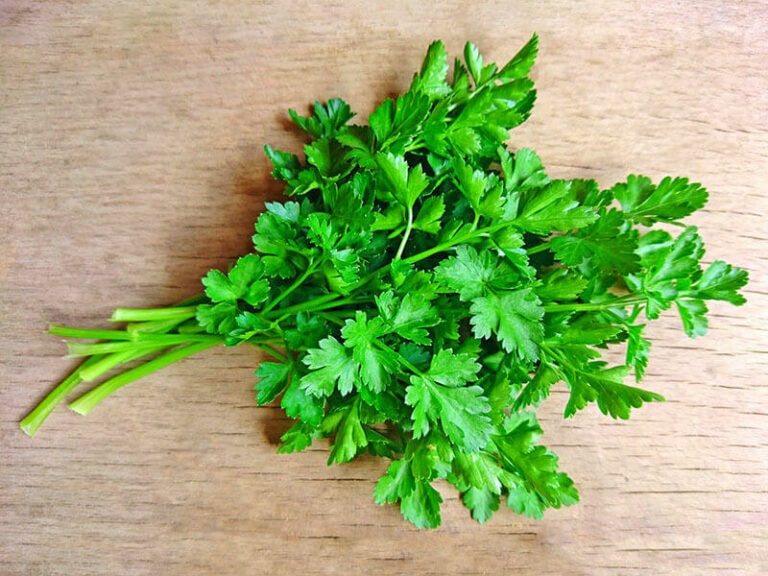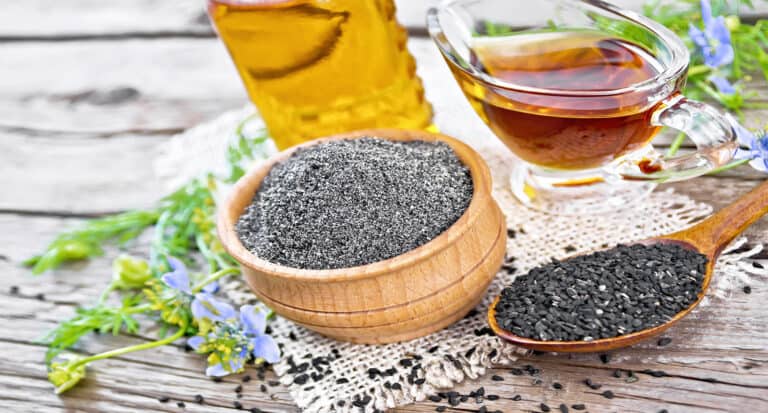You can explore the differences between dried cilantro vs. fresh and know how to use them in various recipes appropriately. Cilantro is one of the most versatile ingredients in cooking, so don’t hesitate to stock some in your kitchen.
This article will provide you with the dissimilar criteria between dried and fresh cilantro and several methods to dry cilantro properly. Don’t go anywhere since the deeper you dive into it, the more interesting you feel.
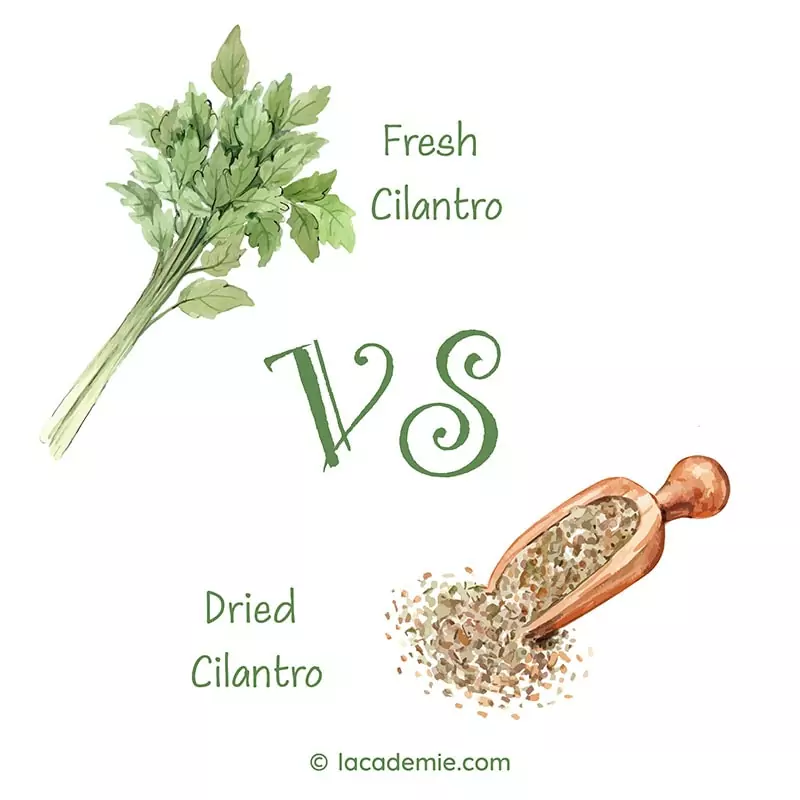
Overview Of Cilantro
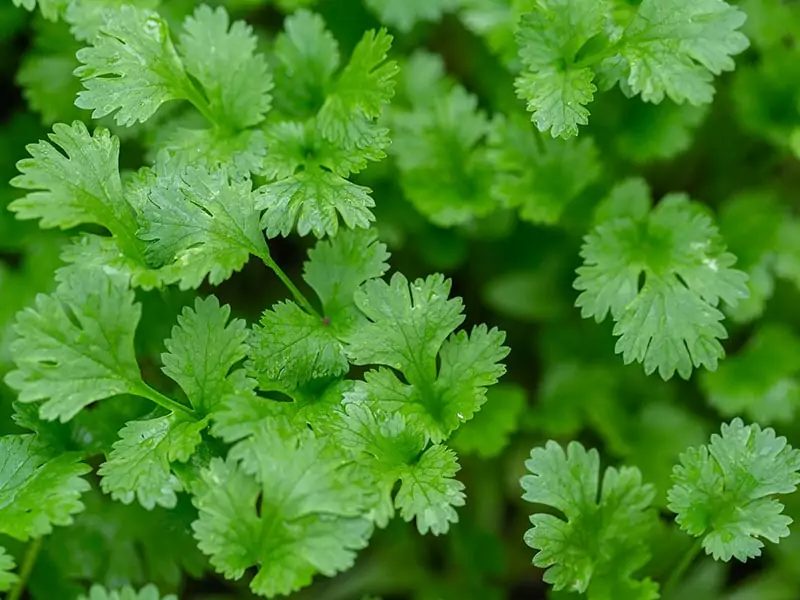
If you are a fan of worldwide cuisine, you can realize the appearance of cilantro in diverse cuisines: South and Southeast Asia, the Middle East, and India. It is also an indispensable ingredient in flavorful crockpot dishes from Mexico. They are loved for the unique flavors the dishes will get when adding cilantro.
Cilantro is the fresh leaves of a coriander plant. Its botanical name is Coriandrum Sativum (1) , so it is not strange if cilantro is one of the top-notch replacements for coriander. Cilantro belongs to the Parsley family. The reason why cilantro is called a versatile herb is that almost all parts of cilantro are edible.
You can use its seeds, leaves, and roots for cooking many delicious dishes. The hometown of cilantro is from the Mediterranean and the Middle East, but they are well-known worldwide. Thus, you can find them in several names, including Chinese parsley, fresh coriander, or Mexican parsley.
Cilantro will provide you with various health benefits thanks to its high nutritional value. Consuming this herb regularly can help you reduce the risk of seizure severity, obesity, diabetes, and heart diseases (2) .
You can choose fresh or dried cilantro to add to your recipes, yet their uses are not totally the same. You should learn their dissimilarities and apply them properly to help your dishes’ flavor be nuanced and rounded.
Cilantro comes from coriander plants, but what are their differences?
Differences Between Dried Cilantro And Fresh Chart
Here is the most expected section; I will show you several different criteria between dried and fresh cilantro. This section will help you have a clear view of the 2 forms of this herb and how to use them correctly.
Detailed Dissimilarities To Satisfy Your Curiosities
Look at the comparison table to have a general view of them, then move to the specific information to understand completely.
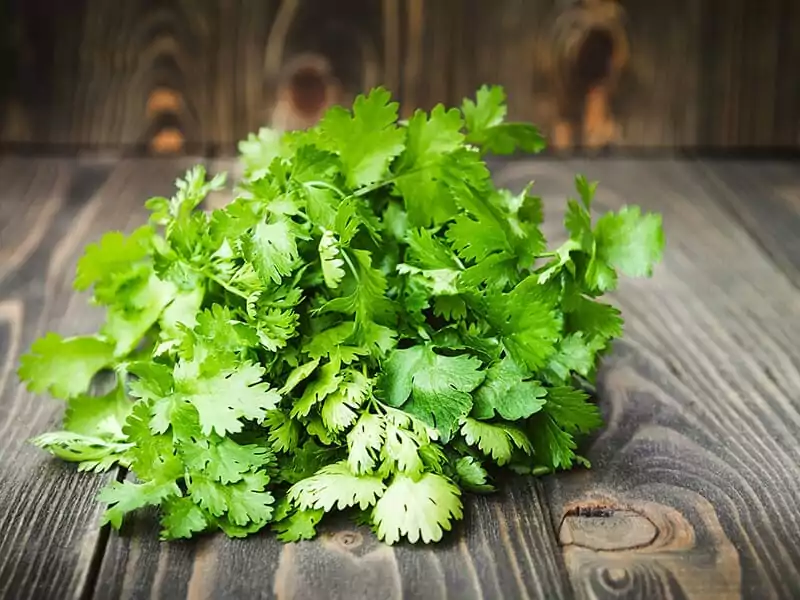
Appearance
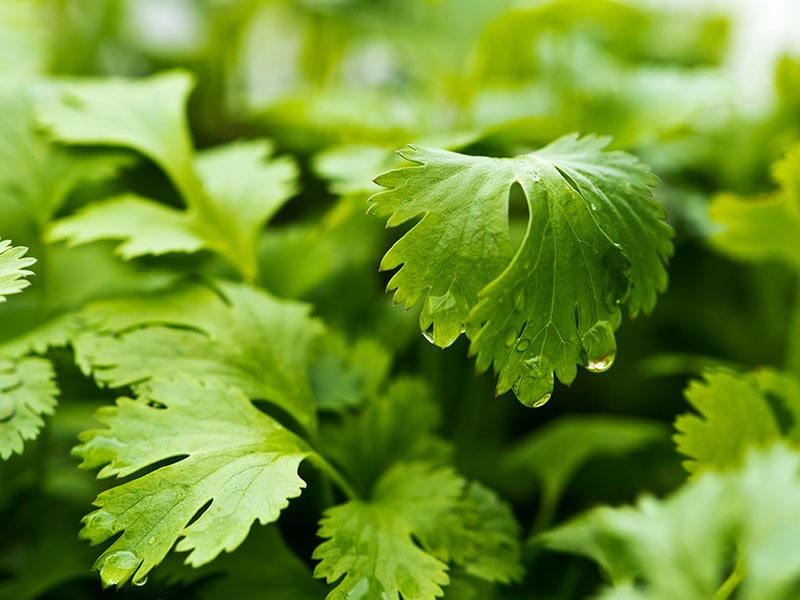
Even if I don’t show you what fresh or dried cilantro is, you can recognize them exactly. The dried one has a darker color with a crunchy texture. You should not expect this type of cilantro to have intact leaves as they evaporate and easily break apart.
The fresh cilantro has long, thin green stalks with flat leaves. Its appearance can be reminiscent of flat-leaf parsley with bright green; however, cilantro and parsley possess several significant differences.
The shape of the leaves is round with slightly jagged edges and looks like shamrocks. Its stems are tender; thus, you can easily separate them by bare hand.
People usually mistake parsley and cilantro; let’s explore why.
Flavor
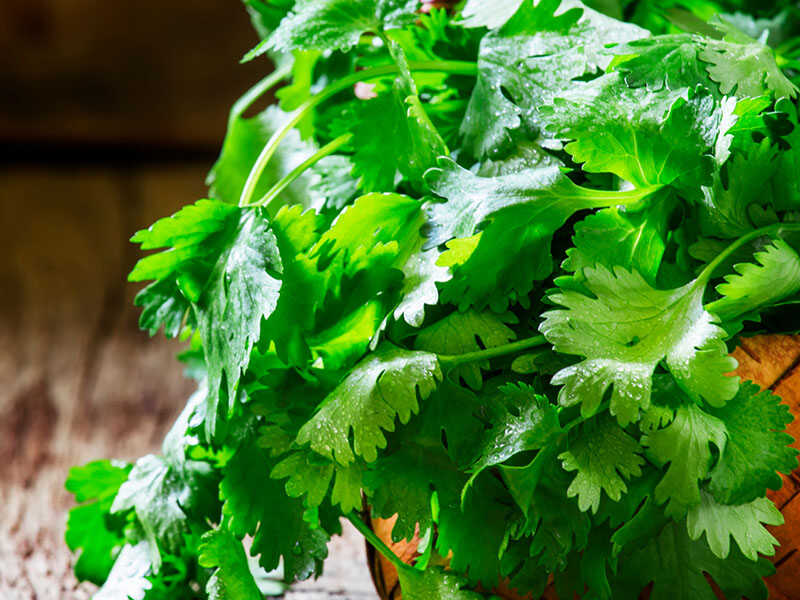
Cilantro is one of few dried herbs that the flavor is different from the fresh form when dried. The unique flavor faints gradually during the losing-moisture process. In particular, you will find them more subtle, mild without any pungency when tasting, and you can freely add them to your dishes without creating sharp notes.
The dried form also retains several unique tastes of a fresh one, including anise-like, with a faint taste of pepper, mint, lemon, and piney.
As you know, not everyone loves to enjoy recipes containing fresh cilantro, so the dried form is a perfect substitute. Do you wonder why I claim that? The taste of cilantro is still a controversial topic on many forums.
There are 2 sides when mentioning this article: the love side and the hate side. If you are fond of this herb, you can feel its pungent, bright, complex, a little bit of peppery and tangy citrus flavor.
Its flavor can remind you about the harmonious marriage of citrus and parsley. It is also one of the most common herbs used in worldwide cuisine. On the contrary, people on the hate side describe it as bitter with a somewhat soapy flavor.
How can cilantro produce this taste? It’s weird. The answer is because of the natural aldehyde substance in cilantro leaves. Certain aldehyde properties are also found in soapmaking and several insects, especially bedbugs.
The same herb, but the different experience since only people with sensitive senses can feel this unique taste.
Aroma
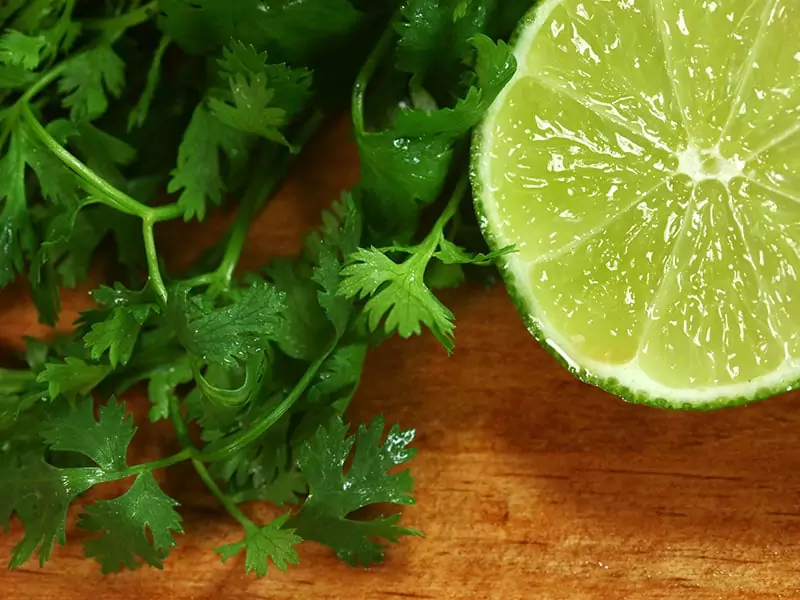
Like the flavor of dried cilantro, its aroma is also gentle. It doesn’t seem to create an unpleasant feeling when people try it.
However, the fresh one is a surprising plot twist. Its smell is quite similar to the taste, with earthy and citrusy scent notes that can remind you about lime. You will find its aroma fresh, distinct, with a combination of lime and lemon smell if you are a cilantro lover. Otherwise, you will find it quite sharp and soap-like.
Shelf Life
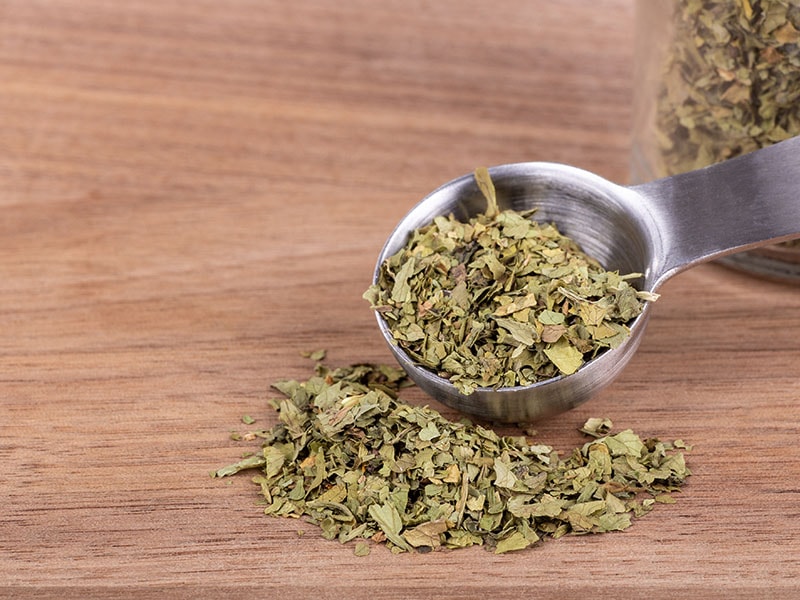
There are many reasons why many people choose dried cilantro, and one of them is its extended shelf life. In proper condition, you can keep it high-quality for 1-3 years, while the lifespan of fresh cilantro varies depending on how you store it.
At room temperature, cilantro just lasts for 2-4 hours before it wimps and wilts. If you want to keep it for 1-2 weeks, the moderately cool and stable temperature in your fridge is the ideal place.
If you bought a bulk of cilantro and cannot make use of it for 2 weeks before it becomes dark and wimpy, the freezer will save you from wasting food.
It will help you extend the cilantro’s shelf life for 1-2 months or longer. You should consume cilantro within the recommended period to ensure its flavor doesn’t change dramatically. After that, you can still cook with it, but you shouldn’t expect the full flavor.
How To Store
After reading about dried and fresh cilantro shelf life, are you curious about the storing methods? I will reveal it right now. Storing dehydrated cilantro is super easy. You just need to place it into an airtight jar and store it in dry, cool, and dark areas.
You need to keep it away from heat and moisture as they are the enemy of all dried herbs, including cilantro. Besides, you shouldn’t allow it to be exposed to direct sunlight since it will decrease the quality of cilantro. Don’t choose a transparent jar; it’s better to opt for opaque.
That’s all for dried form. So, which are the precise ways to retain fresh cilantro’s quality? You can store it at room temperature, in the fridge, or the freezer. It requires more steps, yet they are not complicated, and you can deal with them in a blink.
Application
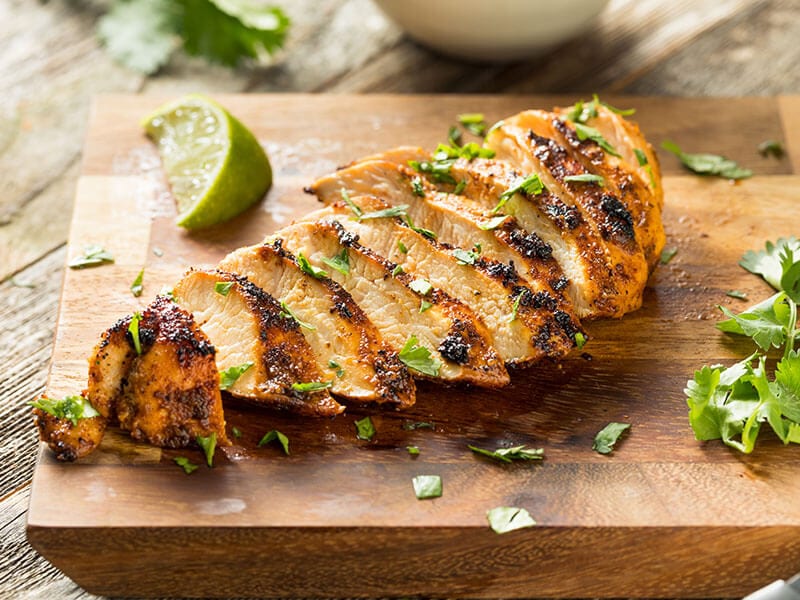
Both dried and fresh cilantro is versatile for cooking dishes. You can prefer to prepare dishes with fresh cilantro, yet don’t hesitate to stock some dried cilantro for emergencies.
As you know, the flavor of dried cilantro is not identical to fresh cilantro, so you should not use the dried form for recipes where fresh cilantro’s flavor is significant.
You can use the dehydrated cilantro for long-cooking recipes such as beans, soups, stew, arroz con pollo, and marinades. Besides, you can add it to purees, bread, rice, casseroles, salad, and tangies.
In these recipes, dried cilantro will be a perfect background flavor. On the other hand, fresh cilantro is an indispensable ingredient in various cuisines, including North Africa, the Caribbean, Mexico, Southeast Asia, India, the Middle East, and Tex-Max dishes.
Among those, the delightful recipes in Middle East cuisine can reflect the cilantro flavor clearly. Fresh cilantro seems to be more flexible than dried form. You should complement it with salsa, chimichurri sauce, sour cream sauce, and topping for enchiladas, tacos, chili, sandwiches, or burritos.
Almost all dishes can be paired with cilantro, namely avocado, chicken, couscous, fish, shellfish, and more. Don’t forget to mix with other spices to elevate the overall flavor, such as chile pepper, cumin, lemons, onions, cinnamon, garlic, and more.
Substitutes
There is no better choice than fresh cilantro and parsley to replace dried cilantro. In case you are short of dried cilantro, you need to use ¼ cup of fresh for 2 tablespoons of dried (¼ cup is equal to 4 tablespoons).
As I mentioned, you will find a somewhat parsley flavor when enjoying cilantro. Not only for dried form, but parsley is also a perfect choice to replace fresh cilantro and vice versa. That means you can use cilantro as a best-matched substitute when parsley is absent.
It has a grassy and green flavor that is close to cilantro. Besides, many people still mistake parsley and cilantro due to their quite similar appearance. You can add a splash of lemon or lime juice to the bitterness of parsley for the perfect taste.
Basil and dill are also prominent candidates for cilantro alternatives. Although there are small differences between them, they can contribute freshness to your recipes.
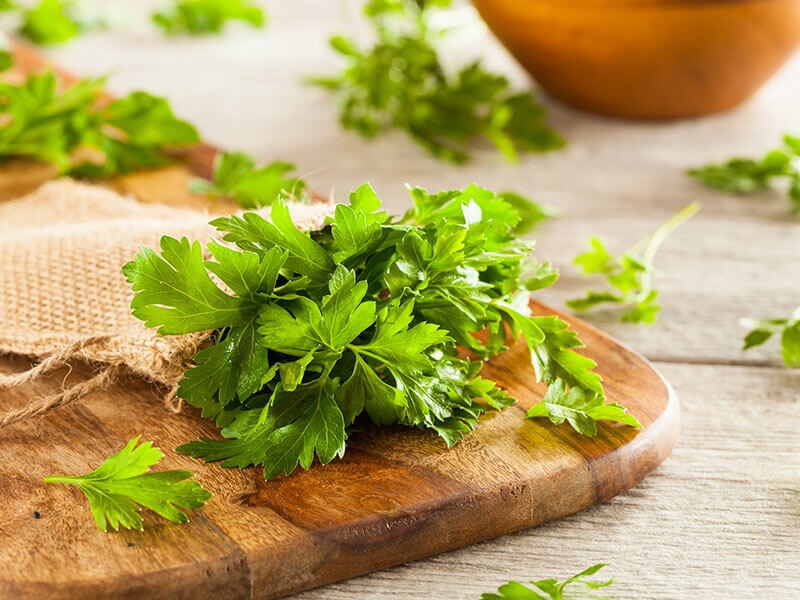
When To Add
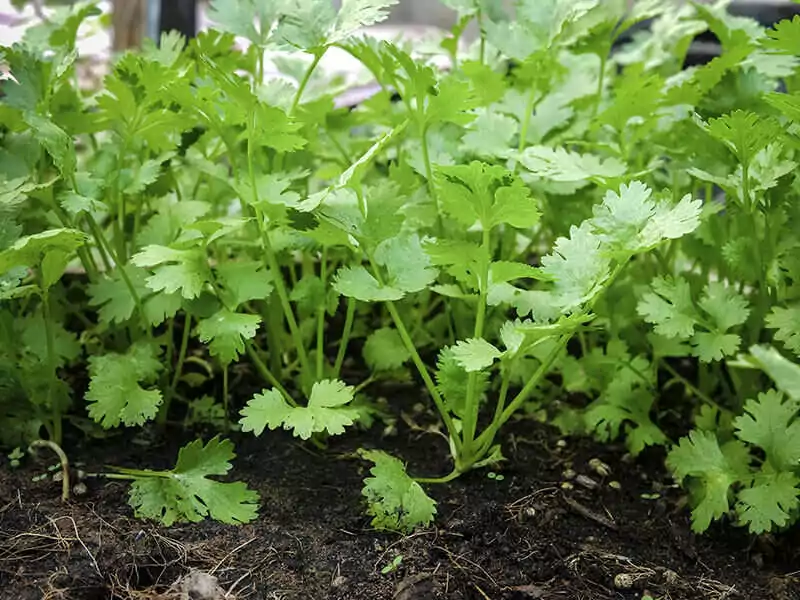
Due to the dissimilar form, the ideal time to add it to your recipes is also different. You should sprinkle dried cilantro at the beginning of the cooking process; thus, it will have enough time to infuse the taste and soak into other ingredients.
On the contrary, you should add fresh cilantro at the end of cooking. Ideally, you should sprinkle chopped cilantro on your dishes after turning off the heat. If you add it too early, the herb will lose its all flavor.
You can even eat raw cilantro to experience its nuanced and rounded taste. The stems and leaves are tender, so it is easy to chew.
Popularity And Price
You can find fresh and dried cilantro easily in any supermarket as it is a significant ingredient in numerous recipes in various cuisines. However, to avoid the shortage of fresh cilantro in certain cases, you should prepare some bottles of dried cilantro in your pantry.
The price of fresh cilantro will be higher than dried cilantro. However, it is not pricey, so you don’t need to worry about this factor.
Are You Storing Fresh Cilantro Properly?
Storing dried cilantro is simple. I will provide you with detailed instructions for maintaining fresh cilantro for a long time. Different storage conditions require different steps.
At Room Temperature
If you plan to use cilantro right now, you can rinse it under the water to remove dirt and mud and use it.
In The Fridge
The fridge is an excellent and convenient choice to store cilantro. Your herb will retain its good condition and taste with a bright green color.
Method 1: Wrap Cilantro
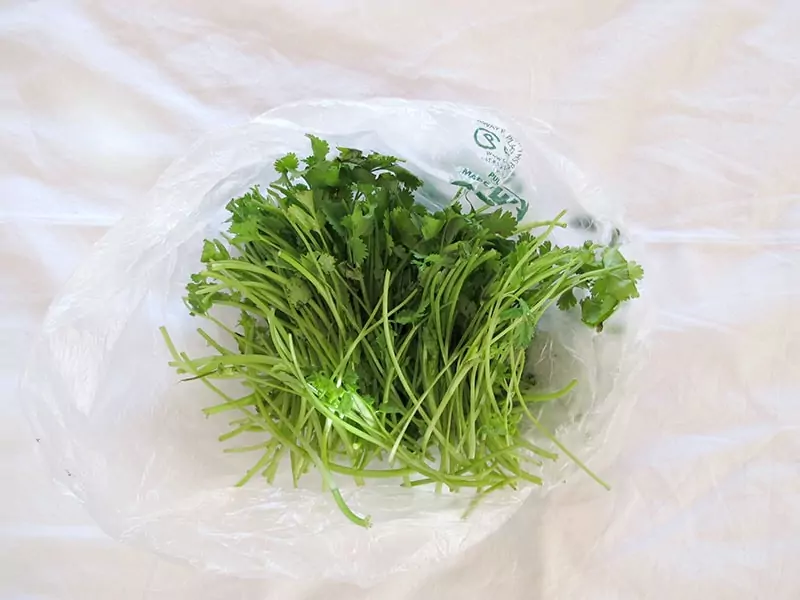
Yes, you just need to wrap cilantro and place it into a plastic bag or container to prolong its standard.
- Paper towel
- Plastic bag or airtight container
Step 1: Air Dry Your Cilantro:
After purchasing wet cilantro from the grocery, you shouldn’t put it in the bag at the moment; let air dry it. Spread a paper towel in a tray and arrange a single layer of cilantro on it; then wait for 10-15 minutes.
Use another towel to pat any excess moisture in your cilantro; the drier it is, the longer you can store.
Step 2: Wrap Your Herb
You need to divide cilantro into 3-4 tiny bunches and arrange them onto a paper towel. Don’t forget to leave a space between them.
Continue to fold them over and over again gently and loosely to avoid hurting the soft stems causing rotten.
If you use a container, you just need to spread a paper towel inside it. Keep in mind the towel should cover all interior space, including the bottom and the sides.
Step 3: Place Cilantro Into Bag Or Container
After wrapping the herb into a paper towel, you have to place it in a resealable bag. Remember to squeeze the air as much as possible. After that, close the bag and keep it in your fridge.
In case you hold cilantro in an airtight container, you need to pack the herb into it. However, before packing, you have to split the stems and leaves separately, arrange the stems in the bottom, and leave the leaves on the top.
Don’t pack tightly if you don’t want your herb to be bruised. Shelter them with a paper towel and close the lid.
Note: If you have a lot of cilantro but only one container, you can stack a few layers of cilantro, as I introduced. Make sure you use a paper towel to divide them. Nevertheless, the maximum number of layers you should pack is 3.
Method 2: Use Cold Water
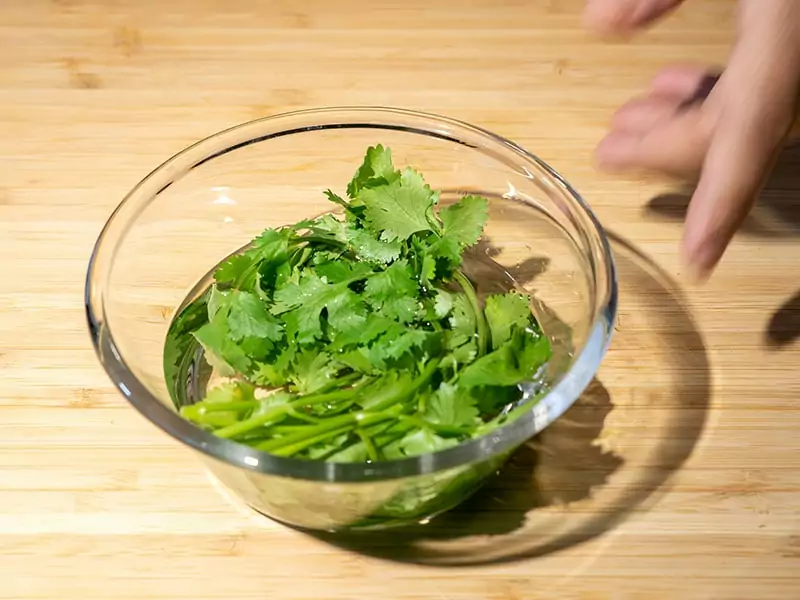
This way is even simpler than the above method. You don’t need to pat the abundant moisture or let it dry naturally. Do you wonder how I do that?
- An airtight container
- Water
Step 1: Remove Bad Stems And Leaves
You need to eliminate all bad leaves to avoid rotting when submerged in water. You should cut off excess stems to fit with your container.
Step 2: Pour Water Into The Container
You can use cool water to fill the container, but it doesn’t have to be cold as it will be cold when placed in the refrigerator. The water should cover the herb; thus, don’t load much cilantro.
Step 3: Close The Lid
The last step is to cover the lid and put the container into your fridge. To prevent your herb from spoiling, you should change the clean water every 1-2 days. The leaves start browning after the peak storing time, but the texture doesn’t change.
Method 3: Use Turmeric Water
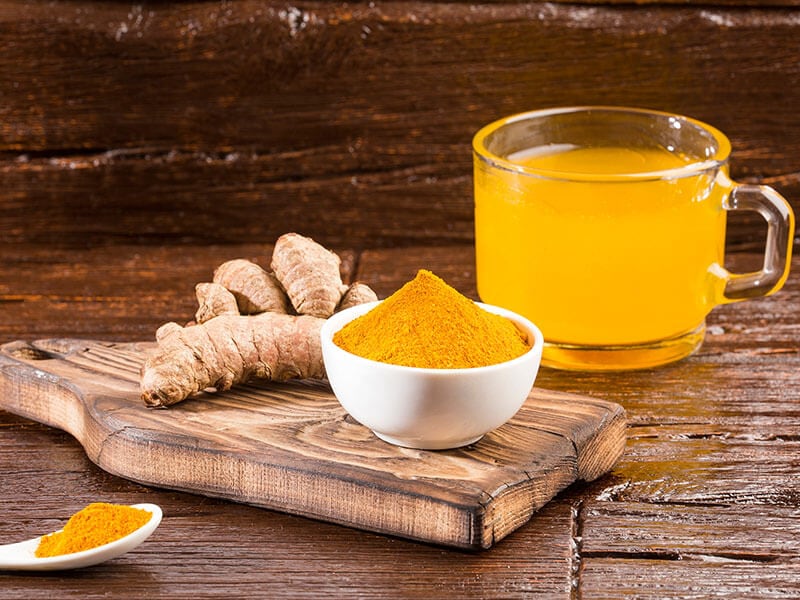
Is it strange? No, it’s the most interesting storing method I have ever known. There are some natural preservation properties in turmeric, and they will help you protect cilantro for longer.
- Turmeric powder
- Water
- Paper towels
- A container
Step 1: Trim Your Cilantro And Make Turmeric Water
You need to divide cilantro leaves and stems separately. After that, you will mix 1 teaspoon of turmeric with a small cup of water and dissolve it completely.
Step 2: Soak The Leaves
Soak the leaves into the mixture for 30 minutes. Then, dump the water out, rinse the herb well to remove all turmeric residue, and wait until they dry thoroughly.
Step 3: Store In The Container
Spread the paper towel like method 1, place the leaves inside, cover the lid and keep it in your fridge.
Method 4: Keep Cilantro In A Jar/Cup
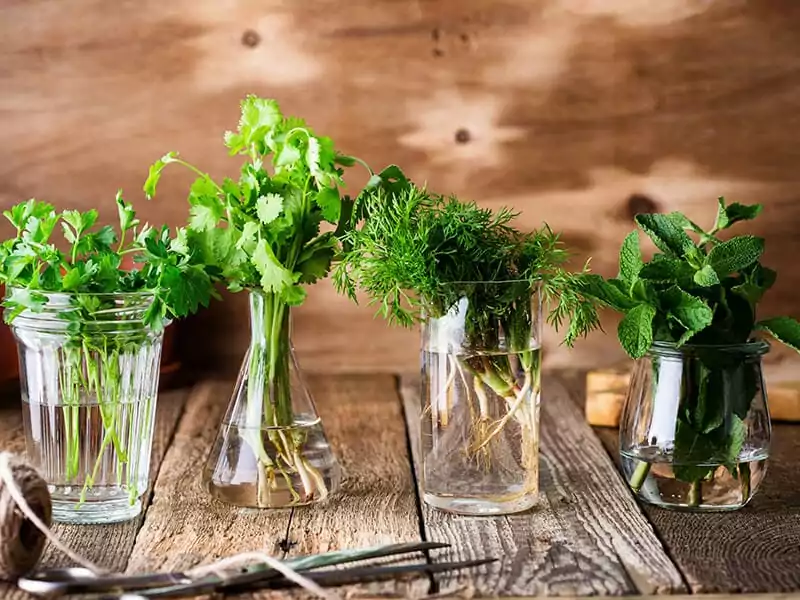
This method requires more steps, but the result will not disappoint you. You should consume it within 2 weeks to get the full flavor.
- A cup/jar (The height is at least 5 inches)
- Water
- Knife
- A board
- A plastic bag
- Paper towel
- A rubber band
Step 1: Fill The Water In The Cup/Jar
Make sure your cup or jar is free of dirt, soap, and other detergents. Prepare tap water and pour it into the cup until it reaches 3 inches. You just need to ensure the stems are soaked in water instead of the whole cilantro.
Step 2: Dry Your Herb
Take cilantro out of the bag and pat it with a dry, clean paper towel. Don’t wash it; you have to reduce the humidity of the herb.
Step 3: Cut The Stalks
Arrange the cilantro evenly on the board and use a sharp knife to cut the stems about 1 inch from its roots.
Step 4: Place The Cilantro In The Jar/Cup
Place the herb into the cup right after you cut it. Cover the cup and herb with a clean plastic bag. Remember to place the bag over halfway onto the cup and the whole cilantro. You should cover the bag loosely.
Step 5: Fix The Bag With Band
Use a rubber band to fix the bag around the cup that will help you maintain humidity inside the bag, and your herb will not dry out. Put the cup into your fridge.
Note: Don’t forget to wash the herb before cooking.
Don’t skip these instructions if you want a visual view of storing cilantro in the fridge.
In The Freezer
Choosing a freezer to store cilantro is a wise choice to help you keep its taste for a long time. Depending on your preferences, you can freeze it in a bag or ice cube tray.
Method 1: In The Bag
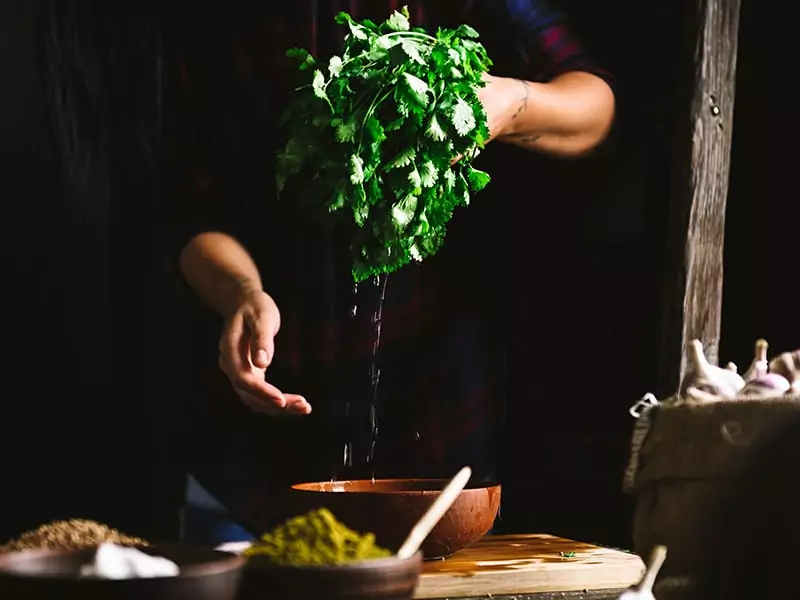
The procedure is quite similar to these above methods, but you need a quick freeze step before freezing it officially.
- Water
- Paper towels
- A knife
- A board
- A baking tray
- A freezer-safe bag
Step 1: Rinse The Cilantro
You have to clean the cilantro under clean water to remove dirt and dust. This step takes you about 20 seconds to do it. After that time, let’s place the washed herb in a basket to allow the water to drip for 2 minutes.
Step 2: Cut The Herb
Blot the cilantro with a paper towel like in previous instructions. You can cut it or freeze the whole stems according to your wishes. The smaller cilantro is, the less space it makes up. If you intend to store small sizes, you should use a sharp knife to separate leaves and stalks.
Don’t use a blunt knife to avoid tearing the herb. You will retain leaves and get rid of stems.
Step 3: Quick-Freeze
Prepare a tray spread with a baking sheet and arrange cilantro on it. You have to make sure the herb will not stick to each other, then place the tray into the freezer. The appropriate time is 30 minutes.
Step 4: Store In A Bag
After half an hour, you will remove the cilantro from the tray to the bag. Squeeze out the air and label the date before continuing to freeze it. You have to do this step quickly since the defrosted cilantro will stick together.
Method 2: In An Ice Cube Tray
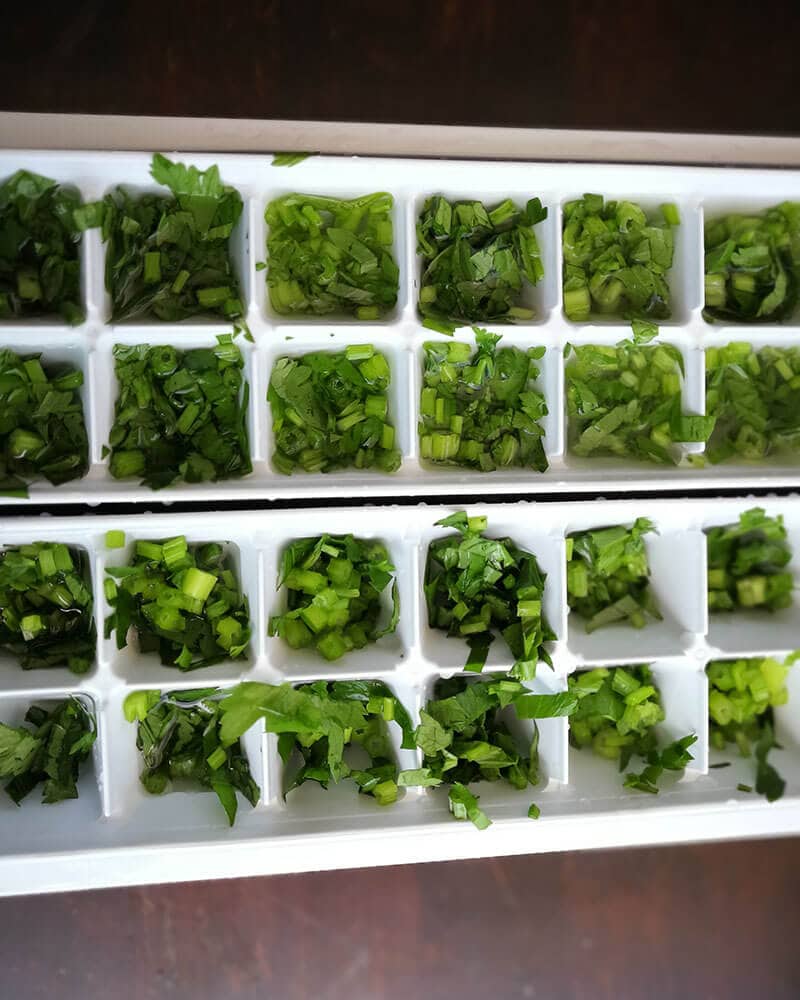
This is a convenient way to help you reduce cutting cilantro while cooking. Don’t skip it, as it will save valuable time for a busy weeknight dinner.
- A food processor or a knife and board
- Ice cube tray
- Water
Step 1: Wash Your Cilantro
Don’t forget to wash the herb before moving to step 2 since you can add these cilantro cubes directly to your recipes. Clean the herb under tap water for 2 minutes. After that, let it drip for a while.
Step 2: Chop Or Blend Cilantro
You have to remove excess water before chopping or blending by patting it with a paper towel. After it dries, chop it with a knife or blend it with a food processor.
Step 3: Pour The Herb Into The Tray
Clean the tray with water to remove dust and dirt. You need 1 tablespoon of cilantro to put into each ice cube section. Then, fill them with water until the liquid covers the herb.
Step 4: Freeze It
Place the tray into the freezer for later use. You can label the date to avoid consuming expired cilantro.
Note: You can also mash cilantro with salt according to a 1:4 ratio (1 teaspoon salt with 4 teaspoons of cilantro) to prolong its shelf life for up to 1 year. Keep in mind to reduce salt in original recipes if you don’t want your dishes to have an ocean-like taste.
Not only cilantro, but you can also freeze other herbs in the same ways.
How To Dry Cilantro Properly
You can simply buy dried cilantro on any spice and herb shelves. Nevertheless, the homemade dried version is more amazing than the store-bought one.
In addition, if you buy too much fresh herb and you don’t want to freeze it, learning how to dry it is a budget-friendly selection. Let’s learn 4 methods to dry cilantro effectively.
Method 1: Air Dry
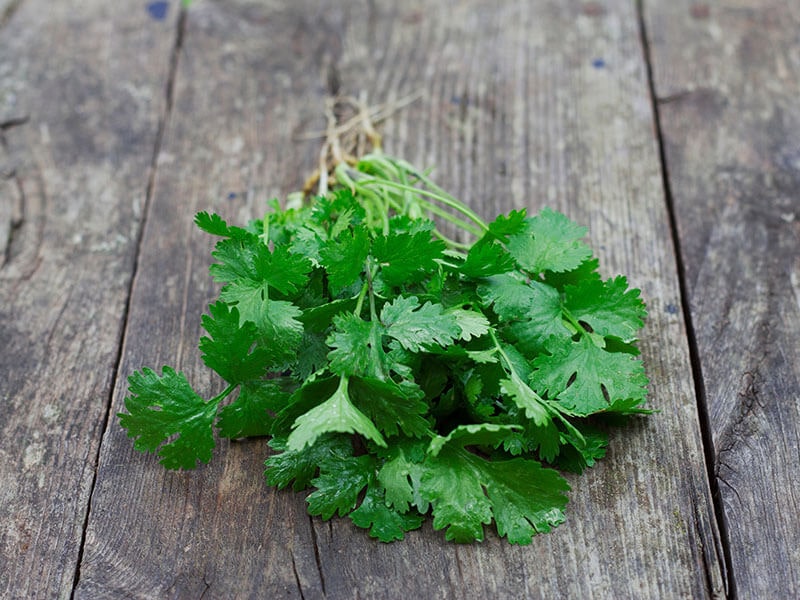
The air-drying method allows you to use natural light to evaporate all moisture in cilantro. But, you need to wait for quite a long time to get perfect results.
Step 1: Wash, Pat, And Tie Cilantro
You need to clean your herb under running water for a while to remove dust and dirt completely from the cilantro. After that, get rid of excess water by using a paper towel to pat it. Use a string to tie the stems; the knot will be tied at the end of the stems and away from the bottom 1 inch.
Step 2: Dry The Herb
Put the bunch of cilantro into a paper bag and tie the stems with the bag’s mouth. Hang your herb in a dry and warm place without being exposed to direct sunlight. After 1 week, you should check whether your cilantro dries or not.
If it dries, it will crumble and be crispy. If it doesn’t dry thoroughly, you have to re-tie and hang it for 1 more week. Don’t forget to keep the result in a jar and place it in the proper places.
Method 2: Using Oven

The oven is the most convenient way and helps you produce a large amount of cilantro within a short time.
Step 1: Preheat Your Oven And Prepare Tray
Don’t forget to wash and let it dry like step 1 of the air-drying method. Meanwhile, preheat the oven to 250F. Cover a baking tray with baking spray to protect your cilantro from sticking when it dries. Keep the spray away from 6 inches and start coating the tray evenly.
Step 2: Bake Your Cilantro
To help you dry cilantro quickly, just use the leaves and throw away the stems. Spread the leaves a single layer on the tray, then place it on the middle rack and wait for 30 minutes.
Don’t open or shake the tray while the machine is cooking. After 30 minutes, check whether your cilantro is dry or not. Take it out of the oven and let it cool for 10 minutes. Scrape to remove the dried cilantro from the tray and keep it in a clean container.
Let’s see how to dry cilantro in an oven.
Method 3: Using Microwave
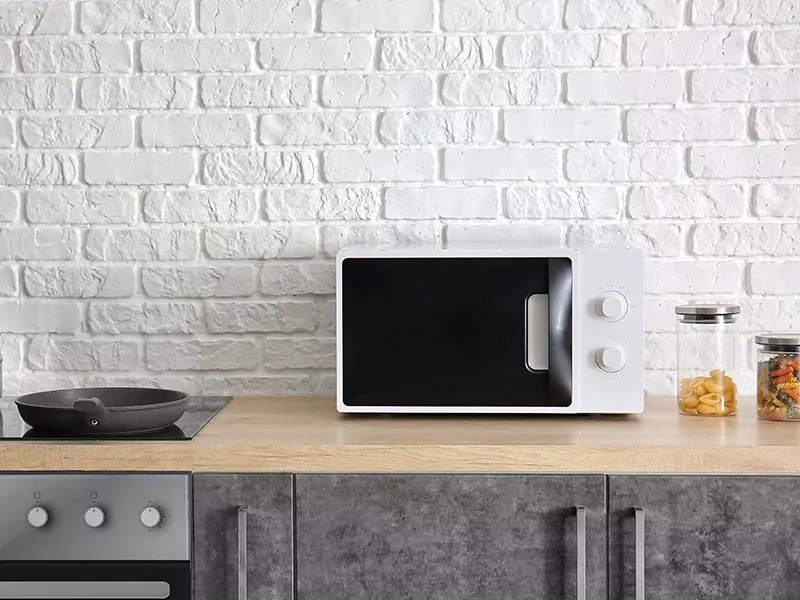
The microwave will help you dry cilantro quicker than an oven. You don’t need to use the baking spray; paper towels and a plate are all you need.
Step 1: Place The Cilantro On A Plate
After you wash and dry cilantro, you will need to spread 2 paper towels on a microwave-safe plate. Place a single layer of cilantro between 2 layers of towel to allow them to absorb all moisture while evaporating. Put it into the machine.
Step 2: Dry The Cilantro
It only takes you 2 minutes to dry cilantro. After that time, remove it from the microwave and let it cool down for 1 minute. In case your herb is not dry completely, re-dry in the machine for 30 more seconds. Keep it in a jar for use later.
Method 4: Using Dehydrator
This way is also simple and doesn’t require many tools except for paper towels and a dehydrator.
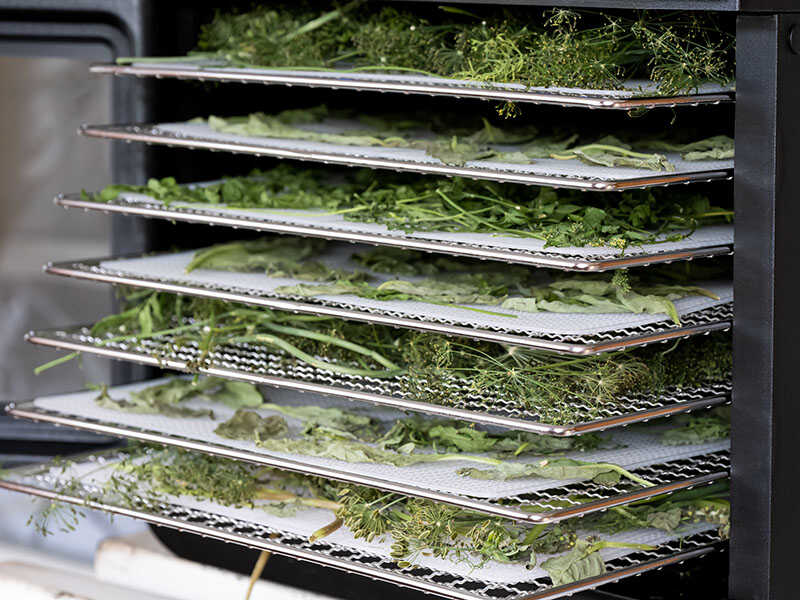
Step 1: Arrange Cilantro In The Machine
Washing and patting your cilantro are the 2 foremost steps you need to do. If you don’t remove water entirely, your herb will dry unevenly and affect the result.
Spread a single layer of cilantro on the tray evenly. If you have to dehydrate many layers, you should make a thin layer to speed up the drying process.
Step 2: Set The Machine
Set up the dehydrator at 110F for an hour. Don’t forget to check them after 1 hour to see if they are crispy and dry enough. If it still has moisture, close the machine and dry for another half an hour. The dried cilantro should be stored in a clean container and placed in dry, dark, and cool areas.
Growing and drying your cilantro by yourself is an interesting experience.
FAQs
Let’s see what other people ask about this topic and whether your questions here. I hope these answers can help you.
Which Kind Of Cilantro Do You Prefer To Use?
Each form of cilantro will have particular applications and flavors. You can use fresh cilantro to replace the dried form, but you should not use the dried for fresh.
Knowing the different features of 2 forms will help you pick the best one for your recipes, and avoid embarrassing situations when serving dishes for both the love and hate sides.
What is your favorite type? Don’t forget to share your opinion with me in the comment box. If you like this post, like and subscribe to receive more useful topics like this. Your cooking skills will be upgraded.
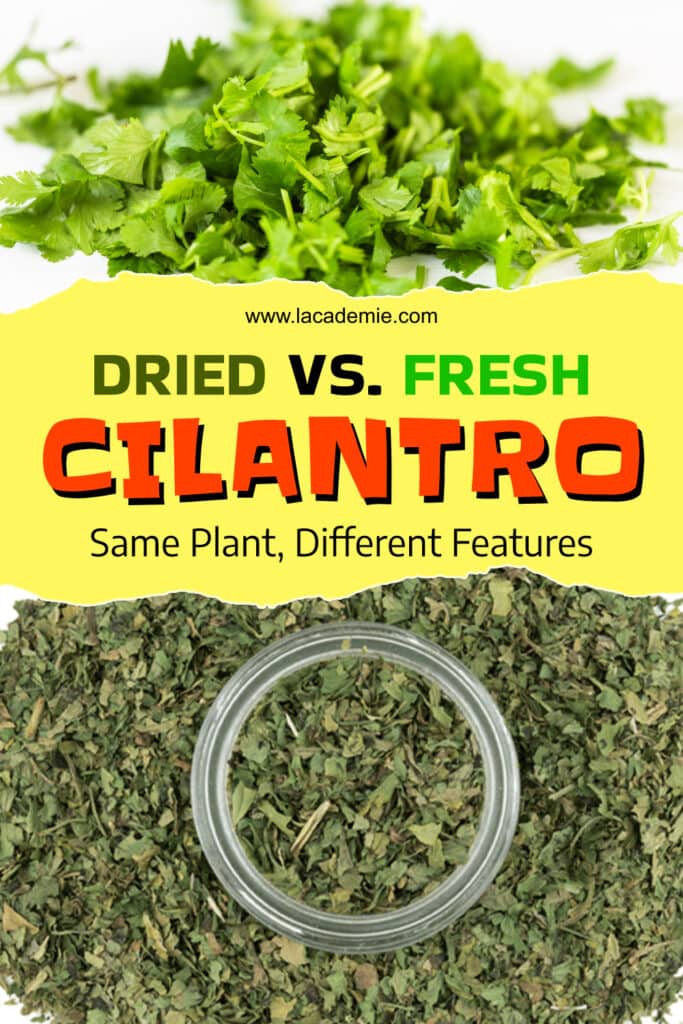
References:
- En.wikipedia.org. 2021. Coriander – Wikipedia.
- Chloe Bennett, B., 2021. The Health Benefits of Cilantro (Coriander).

